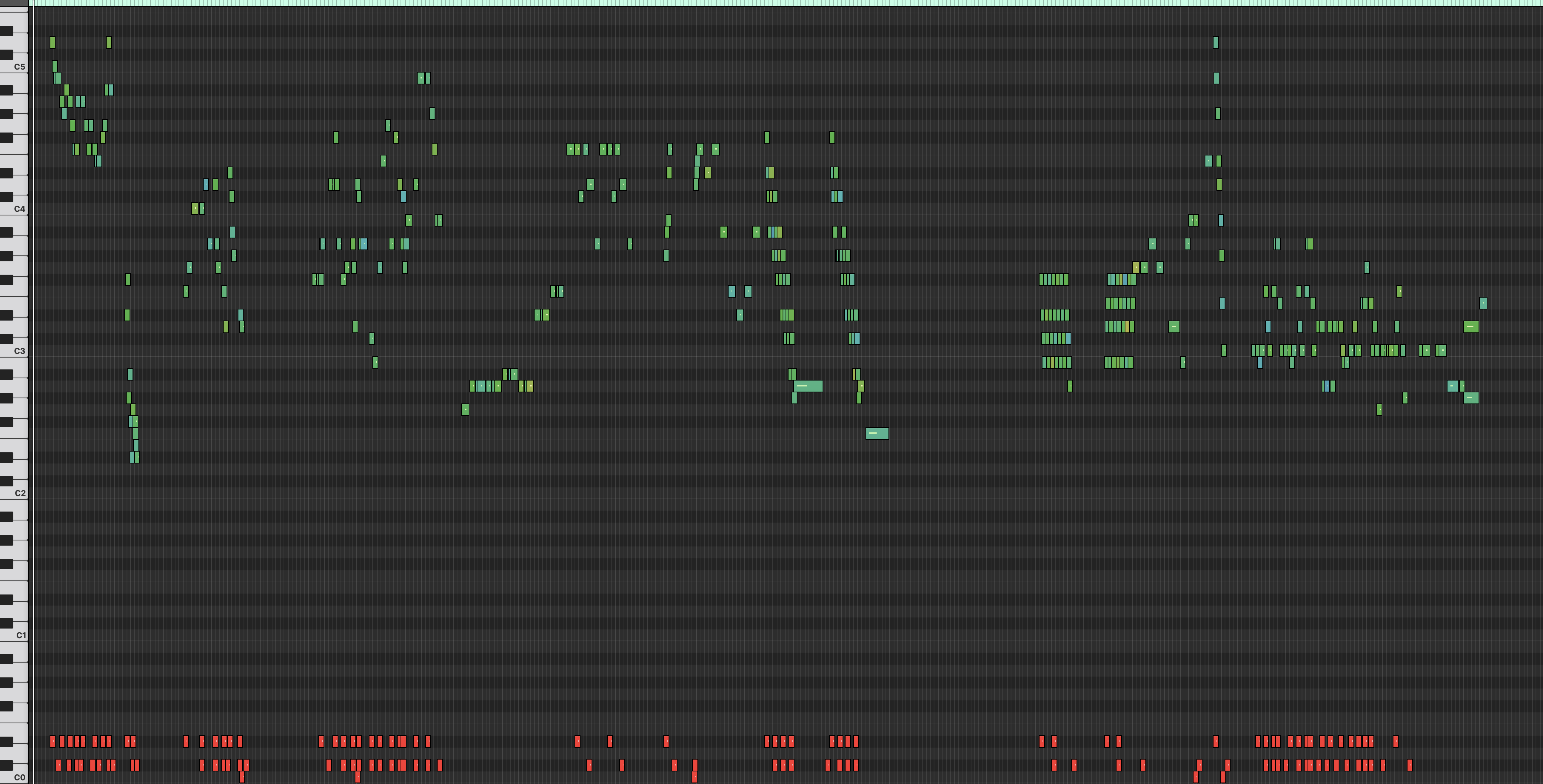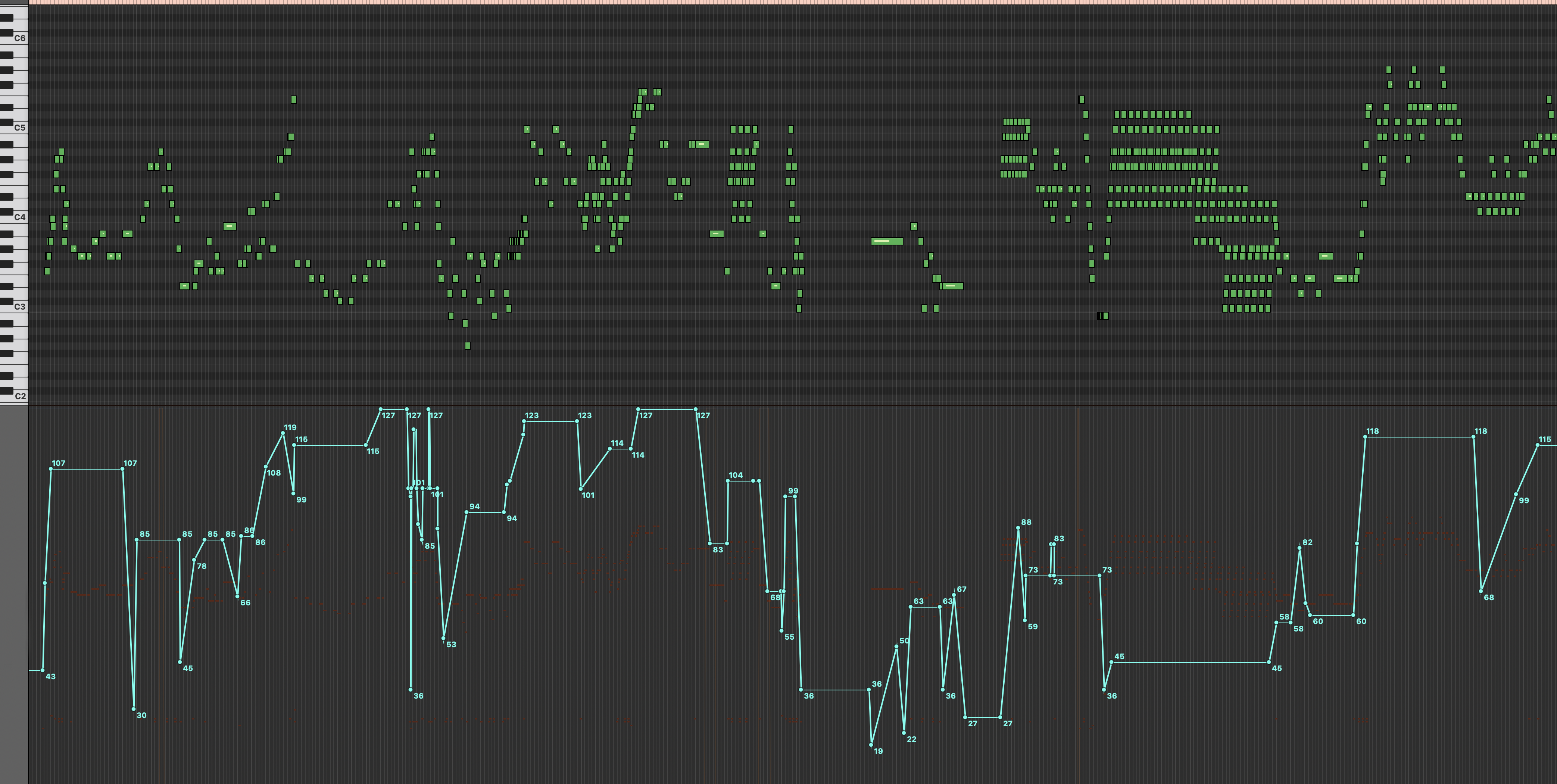9. MIDI Mock-up
Although Sibelius is an effective tool for music notation, it does not have high enough quality sounds built in to give a convicing realisation of an orchestra. Most importantly, it plays back many of the articulations and special techniques incorrectly. Therefore, Logic Pro was used to create an accurate representation of the piece, as it offers far greater control over the sound.
The first process in the mock-up stage was to remove all of the control change/ program change data that Sibelius automatically creates. This is because Logic interprets it inaccurately, and it proves quicker to manually recreate the data later on. With only the MIDI notes remaining, sampler instrument plug-ins were loaded up for each channel. The audio samples were from the Vienna Symphonic Library (VSL) Special Edition Plus and Opus sample libraries. These libraries were chosen as they include samples of all the major articulations orchestral instruments (see VSL, 2012).
To switch between the various articulations (staccato, sustained, legato, sforzando, trills etc.), it was necessary to input key-switches (low MIDI notes) for each instrument. Figure 46 shows the key-switches for the first clarinet part in the Piano Roll editor.

Figure 46. Key-switchs in the first clarinet part (shown in red)
Using the score as a guide, every dynamic marking was recreated with ‘velocity cross-fade’ automation. This achieves crescendos/decrescendos that change in tone as well as in level, by mixing between the sampler instrument velocity layers. Standard expression/volume automation does not give this level of accuracy, as it only alters the sound level. Figure 47 shows the automation for the first violin part. The reason for manually inputting all of this automation is that the tone quality and level of the articulations in the VSL libraries vary significantly. Therefore, just using the dynamics from the Sibelius score would give an extremely uneven sound.

Figure 47. Velocity cross-fade automation on the first violin part
In addition to the instrument dynamics, some overall mixing was needed. This process included: reducing the level of the loudest sections to avoid clipping/distortion on the output, panning the instruments precisely using Direction Mixer plug-ins, and adding EQ to enhance certain frequencies. Each channel was also sent to a reverb bus. The VSL samples were recorded in a room with very little reverb, so adding reverb at this stage (a large concert hall in this case) was necessary to avoid a harsh sound quality.